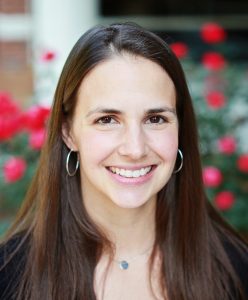Cellular therapy is a form of treatment where patients are injected with cellular material. Different types of cells can be utilized such as stem cells (such as mesenchymal stem cells) and cells from the immune system (such as regulatory T cells (Tregs)) from either the patient or a donor. In many cases, these cells have been reprogrammed to carry out a new function that will aid in the treatment of a disease or condition. Cellular therapy has become increasingly-popular largely due to the fact that cells have the ability to carry out many complex functions that drugs cannot. When successful, cellular therapy can result in a more targeted and thus more effective treatment. More information on cellular therapy can be found here .
Rho is conducting several studies using cellular therapy to treat diseases such as systemic lupus erythematosus and pemphigus vulgaris and for various applications within organ transplantation.
Cellular therapy trials offer their own unique set of challenges. The following list presents some of these challenges encountered here at Rho.
- Cellular therapies require highly-specialized laboratories to manufacture the investigational product, especially if the cells are being manipulated. Centralized manufacturers are commonly utilized requiring logistical considerations if the trial has multiple study sites. These logistics may include proper packaging, temperature storage, shipping days, etc. which all must be considered when shipping the product.
- It is critical to plan for and establish clear communication between the manufacturing lab, the study site, and the study team when working under time constraints. One common consideration is to ensure extracted cells will not arrive at the manufacturer on a Saturday or Sunday when lab personnel may not be available to immediately process cells.
- Protocols usually require a minimum number of cells be available for infusion into the subject. The protocol must detail what steps to take when not enough viable cellular product is produced. Some questions to consider include:
- Is it is possible to recollect cells for a second attempt? If so, does it work with the timing of the trial?
- Are there leftover cells from the first attempt?
- Potent drugs are sometimes paired with administration of the cellular product. It is crucial to avoid administering these drugs unless a viable cellular product has been produced. Checks should be in place to ensure product is available before administering additional study drugs.
- Guidance exists limiting the amount of blood that can be collected over an 8-week period from a single subject. If the cellular product is manufactured from a blood donation, the amount of blood from any and all blood draws around the same time should be taken into consideration. If the blood donation occurs close to screening when blood is often drawn for various baseline labs pay close attention to the total amounts as exceeding the established limits can be easy.
- The subject accrual for a study should be clearly outlined in the protocol. Is it X number of subjects that receive a minimum number of cells, X number of subjects that receive any cells, etc.
- Cellular product may not be administered until several months into the study. Subjects may be evaluated for eligibility several times while waiting for the infusion allowing multiple time points each subject may become ineligible. This along with the potential of insufficient cellular product can result in an unexpected length of time to administer cellular product to the target number of subjects. As such, this is an important factor when determining the duration and budget for a cellular therapy study.
All in all, there are numerous opportunities for learning when using cellular therapies to treat disease. In many disease areas, this concept is still novel and study teams are facing new challenges with each study. Understanding these challenges early can help in the development of a robust protocol that addresses these same challenges before they ever become an issue.
 Heather Kopetskie, MS, is a Senior Biostatistician at Rho. She has over 10 years of experience in statistical planning, analysis, and reporting for Phase 1, 2 and 3 clinical trials and observational studies. Her research experience includes over 8 years focusing on solid organ and cell transplantation through work on the Immune Tolerance Network (ITN)and Clinical Trials in Organ Transplantation (CTOT) project. In addition, Heather serves as Rho’s biostatistics operational service leader, an internal expert sharing biostatistical industry trends, best practices, processes and training.
Heather Kopetskie, MS, is a Senior Biostatistician at Rho. She has over 10 years of experience in statistical planning, analysis, and reporting for Phase 1, 2 and 3 clinical trials and observational studies. Her research experience includes over 8 years focusing on solid organ and cell transplantation through work on the Immune Tolerance Network (ITN)and Clinical Trials in Organ Transplantation (CTOT) project. In addition, Heather serves as Rho’s biostatistics operational service leader, an internal expert sharing biostatistical industry trends, best practices, processes and training.
 Kristen Mason, MS, is a Senior Biostatistician at Rho. She has over 4 years of experience providing statistical support for studies conducted under the Immune Tolerance Network (ITN) and Clinical Trials in Organ Transplantation (CTOT). She has a particular interest in data visualization, especially creating visualizations within SAS using the graph template language (GTL).
Kristen Mason, MS, is a Senior Biostatistician at Rho. She has over 4 years of experience providing statistical support for studies conducted under the Immune Tolerance Network (ITN) and Clinical Trials in Organ Transplantation (CTOT). She has a particular interest in data visualization, especially creating visualizations within SAS using the graph template language (GTL).
